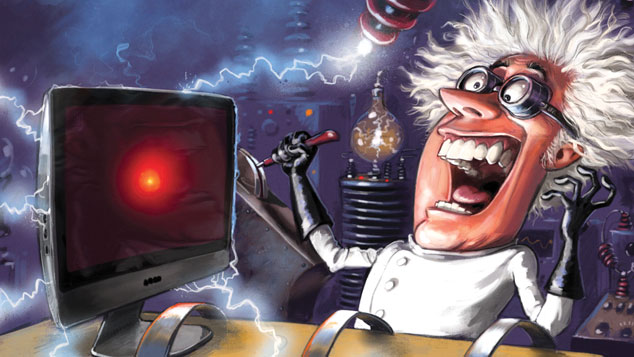
First the machines came for the menial jobs. Since then, they’ve climbed the corporate ladder and now sit on the board of directors of at least one venture capital firm in Japan. But that’s Japan, you say. Well, if you thought your job was safe, you might want to think again. In the cover story of this week’s MoneyWeek magazine, Matthew Partridge gets to grips with the nuts and bolts of what’s driving the rise of artificial intelligence, or AI for those in the know.
Make no mistake, this is no science fiction. Only just recently, a precocious computer named AlphaGo beat the Korean champion, Lee Sedol, at the board game Go. Sedol expected the best of five challenge to be a cake walk. His only concern was, says Matthew, “that he might suffer the ‘humiliation’ of losing one game”. In the event, he was “swept” in the first three.
It was supposed to be at least a decade before we reached this point, says Matthew. But here we are already. And who knows where AI will take us? And when. That’s what Matthew finds out, along with the best stocks that are fully engaged in profiting from the tech revolution. They’re looking to profit. You should too. If you’re not already a MoneyWeek subscriber, now’s your chance. Sign up today.
The next big thing
Talking of what’s new, are you the kind of investor that reckons they can spot the next big thing? Well, that doesn’t have to apply to just companies. It can also apply to artists. That’s where MoneyWeek contributor Sarah Ryan comes in.
Sarah is the founder and director of New Blood Art. As the name suggests, she’s always on the lookout for hot young talent. If you’re new to investing in artwork, there’s never been a better time to start, says Sarah. The art degree shows will be starting across the country shortly. It’s here that you get to see a “distillation of the graduating artists’ work” in their last year of study.
“Only a small percentage of these students will go on to become established artists”, says Sarah. But you never know. Maybe you’ll bag yourself a masterpiece at a bargain price. Moreover, “stratospheric gains” can come in a “relatively short time”. Just look at Peter Doig. This artist graduated from Chelsea School of Art in 1990. In 2007, one of his paintings sold for $11.3m.
Worst case scenario, says Sarah, “you still get to enjoy the piece knowing that you have spent significantly less than on a comparable piece at a gallery”. Find out where your nearest art show is taking place in this week’s issue.
Living wage
Now, it’s probably a fair assumption that if you’re already a MoneyWeek reader, you’re not living in an artist’s garret, living on a shoe-string budget. But good news if you are. From today, those on the minimum wage are getting a pay rise, says Matthew Lynn. “Anyone over 25 will have to be paid at least £7.20 an hour.” By 2020, that’s projected to rise to £9.
That’s a pretty “chunky” rise when you consider that inflation is close to zero. In fact, says Matthew, it represents one of the biggest state interventions in the market since the minimum wage was introduced in 1997. That’s got to have knock-on effects for the economy. Matthew predicts the five long-term trends we can expect to see gather force.
Three great micro-caps to tuck away
From hot young artists back to small dynamic companies. This week, MoneyWeek’s editor-in-chief Merryn Somerset Webb talked to Miton’s Gervais Williams. He manages a number of smaller company funds, so he knows what he’s talking about, when it comes to finding bargains – “the market has been displaying inefficiencies”. That’s fund manager speak for “there’s stuff out there that’s way too cheap”, says Merryn.
It gets better. Williams thinks it’s the right time to invest in very small companies given the sluggish pace of growth in the markets. “If the world’s not growing, you need micro-caps”, says Williams.
So, does he have any share tips for Merryn to tuck away to pay her children’s university fees? (She’s quick to add that we’re talking a good ten years away.) It just so happens he has three. Check out this week’s issue to find out what they are.
Britain’s nuclear controversy
You can’t have missed the recent controversy over a third nuclear power plant at Hinkley Point. It could cost as much as £24.5bn to build, and engineers have not been slow to voice their concerns. Apparently, the cost of building it could even drag EDF under. That’s France’s state-owned energy company that has taken on the Herculean task of building it. But why is it so expensive? And what are the alternatives? Matthew Partridge finds out in this week’s Briefing.
There’s so much more in this week’s issue of MoneyWeek magazine. My colleague Cris Sholto Heaton looks at what happens when your stockbroker goes bust. Sarah Moore reminds us why it pays to switch savings accounts, and names a couple of the best. Sarah also looks at the pros and cons of salary sacrifice. And lastly, don’t forget to read all about my recent jaunt on the French Caribbean island of Martinique.
Sign up today.